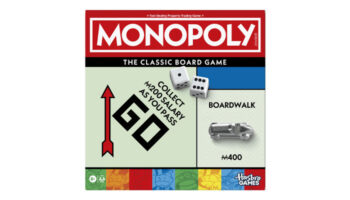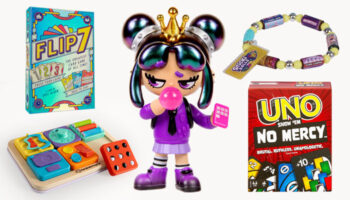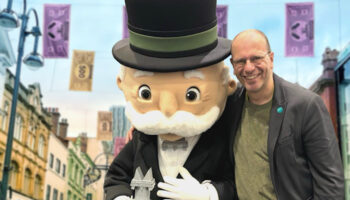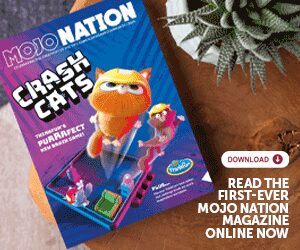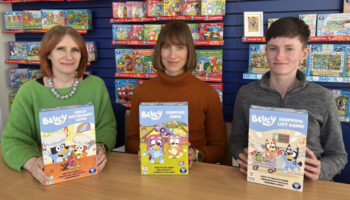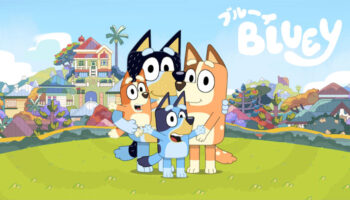Challenges and opportunities…
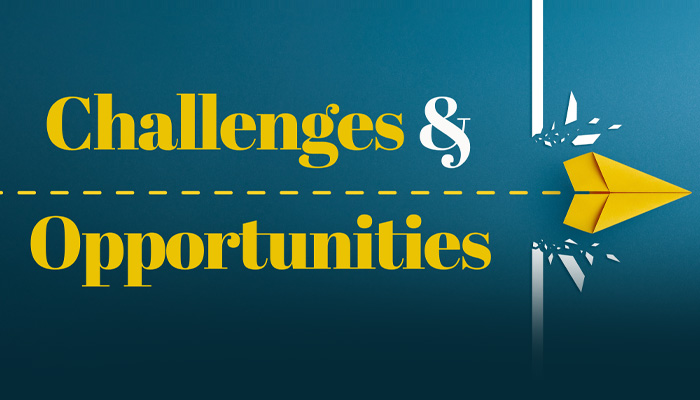
With 2025 in full swing, design and invention figures discuss the exciting opportunities and tricky troubles ahead…
 Adam Carson,
Adam Carson,
Director of Product Innovation, Fat Brain Toys
This year, Fat Brain has a great opportunity to reach new customers through a range of exciting product launches in fresh categories. We hope these new items will help us connect with a broader audience and tap into customers’ ever-evolving interests.
It’s been a fun process to explore different perspectives and showcase the range of our creative abilities. This also opens up opportunities for inventors. By looking further into other categories of play, we can work with inventors to explore many more toy and game concepts.
One of the industry’s biggest challenges will likely be balancing kids’ growing interest in digital entertainment with hands-on play. As screen time rises, the effort to get kids to engage in physical product only increases. To keep up, toy companies will need to get creative to make physical toys just as engaging as digital experiences.
 Richard North,
Richard North,
President, Wow! Stuff
The biggest challenge will be tariffs imposed on companies selling Chinese or far east products to the US. The biggest opportunity? Offshoring elsewhere to avoid the possible tariffs and doing it ahead of your competition.
 Adam Hocherman,
Adam Hocherman,
Co-Founder, Wayfarer Games
2025 must become the year of the ‘big swing’. It’s perhaps unsurprising that I write this tired analogy in the midst of the 2024 World Series in the United States. Major League Baseball, like the toy industry, has faced headwinds in recent years – and for many of the same reasons…
Baseball is a deliberate game that rewards the patient. That does not describe the demeanour of today’s young fans, who are looking for quick adrenaline hits and instant gratification. Interest in faster sports has encroached on baseball’s popularity… So too has a propensity for ‘newness’ encroached on what used to be a more patient – read, ‘evergreen’ – toy industry. This makes an inventor’s life much more difficult. So difficult that inventors, brand managers and others are reluctantly taking roles in other industries altogether.
Meanwhile, mass retailers increasingly look to move games in and out, year-by-year, as a matter of corporate strategy. On top of this, some major players are quite publicly ‘doubling down’ on a digital strategy: effectively an admission of defeat at the sword of the screen. As a result, great toy inventors are struggling to find footing… For many, the economics simply aren’t adding up – and therein lies the greatest challenge. Which brings me back to the greatest opportunity…
Many major publishers have eschewed the risks associated with ‘big swings’ due to reasons that are not unjustified from where they stand. But time is running out and perhaps that big swing – while still risky – is suddenly looking like a better strategy given the alternatives. This opens up opportunities for toy inventions – some of which I’ve even had to pass on myself – that may not have been feasible two years ago but are, or simply must be, today. Let’s Freddie Freeman-it!
 Fi Murray,
Fi Murray,
Innovation Director, Making Things Studio
The toy industry has faced a series of complex challenges over the past five years, creating ripple effects across every layer of the chain. But challenges fuel opportunities… For 2025, our studio is focusing on diversifying how we bring concepts to market, forging new partnerships, flexin’ within the traditional inventor model and doubling down on strong performing categories, like developmental play for little ones. We’re also working on 360-degree IP that spans toy, print and digital realms.
One major industry trend is the growth of the second-hand toy market, especially for items aimed at children over three – and all the way up to adult collectors. Families increasingly see second-hand purchases as a sustainable and a budget-friendly choice…
The reason that platforms like Vinted are thriving is because pre-owned toys still deliver the thrill of novelty for kids, while satisfying parents’ sustainability goals and saving pennies against reduced incomes. These platforms are a testament to changing consumer habits – and a compelling case for manufacturers to adapt. Nearly 60% of toys for my kid this past Christmas were pre-loved from Vinted and Facebook Marketplace.
Imagine, then, if manufacturers could capture revenue from every resale within a product’s lifecycle – not just the original sale. Some companies are already experimenting with this through take-back schemes and various partnerships. By offering trade-in or resale options on their own sites – or collaborating with established second-hand platforms – manufacturers could foster new revenue streams, attract new customer demographics, and reinforce eco-friendly values.
Fashion has similar high volume, low value products. Zara, for example, has pioneered a model where customers can resell purchased clothing back to them. Zara then resells these to new customers at a discounted rate. This approach could create similar opportunities in toys, where manufacturers benefit at every stage – and consumers enjoy an ever-expanding choice of sustainable options. Toys are more complex in regard to QA, so it wouldn’t be as simple… But hey! What’s one more challenge to troubleshoot?!
 Lisa Guili,
Lisa Guili,
Vice President & General Manager, Educational Insights
Social commerce has started to gain serious traction in the US, and we’re expecting its growth to continue to fuel our own businesses in 2025. The exciting part is that while much of today’s social commerce is influenced by entertainment platforms like TikTok, Instagram and YouTube, the POS impact is evident across all forms of shopping – including physical retail.
Even more encouraging is that viral content can be, and is being, shared by creators with all levels of followings. This means consumers have more power than ever to drive what becomes a top-selling toy or game. This accessibility is opening opportunities for small and medium-sized brands to broaden their reach quickly and efficiently.
The surge in entertaining content has also contributed to expanding the ever-present kidult trend. For instance, adult couples creating content of themselves playing all types of games has grown significantly in the past year. It has made it permissible – dare I say ‘cool’ – for adults of all ages to engage in quirky, hilarious play as a pastime. At Educational Insights, we refer to this phenomenon as ‘coupletainment’.
The outcome, besides driving consumer awareness through engaging content, is an emergence of ‘age neutrality’ in the toy and game space. Age neutrality allows all ages to embrace toys and games. It’s so prevalent that I even saw a recent post from a specialty toy store owner about a preschool-aged toy that’s been in high demand for kids of all ages – including teenagers.
Virality is fleeting. To fully leverage all the opportunities that social commerce is creating, businesses need to strategically plan how to nimbly navigate viral moments and build them into long-term growth occasions for their products and brands.
 David Snow,
David Snow,
Owner, The Fantastic Factory
All I can say with 100% certainty is that there will be some challenges and there will be some opportunities… Good luck everyone! If you made it through 2024 you are winning, big congrats. 2025 is going to be one hell of a ride… War, tariffs, inflation, interest rates, declining birth-rates, empty retail stores, Web3, internet, social media, space travel, container prices. That said, I know we will still make games that could be the opportunity you’re looking for in 2025.
 David Yakos,
David Yakos,
Co-Founder, Streamline Design & Salient Technologies
One of the biggest opportunities has to do with one of the bigger challenges we face as toy and game developers – and parents… Digital displacement and screen fatigue. Digital innovation offers major opportunities, but it also poses a large challenge to traditional human interaction and the toy and game industry.
Screen-based entertainment keeps vying for kids’ attention with dopamine boosts every 10 seconds, making it tougher for physical toys to stay engaging. Screens have become a pacifier, stifling active and imaginative play. Parents, if not oblivious, feel guilty over the excess amount of screen time. This imbalance has put pressure on toy companies to strike a balance between digital integration and encouraging physical imaginative play.
To stay competitive for kids’ attention, companies must either incorporate digital and tech features in a way that enhances physical toys to make play more interactive and magical – or embrace a low-tech approach that delivers highly engaging, hands-on experiences through human interaction.
 Ben Dermer,
Ben Dermer,
SVP of Toy Innovation, Spin Master
A recent challenge is aligning the inventor community to work earlier in the year. Current US shipping dates mean we start looking at concepts – and making decisions – earlier than ever, while the inventing world is to some extent still stuck in an older timeline. In truth, we look at more product concepts in the summer and early fall than any other time…
That means we’re pretty well into development by the time the winter toy shows come along. We’re obviously excited to see great new ideas at any time – and will jump on a great opportunity. When it comes to putting the line together, though, it’s a challenge to synchronise development timelines. Summer’s now the high time.
It’s also worth noting that, because most ‘big’ companies rarely do totally new brand launches, it’s understandably challenging to get inventors to invest heavily in ‘new’ versus – say – brand-focused development. While many big toy companies tend to focus almost exclusively on existing brands, the world loves new stuff more than ever – and the industry needs it. We need the next Super Soaker, Furby, L.O.L. and Hatchimals… We need the next big thing. It’s a hard target, but if you hit it big with ‘new’, it’s the biggest opportunity there is.
Compounding this challenge is the fact that the bar keeps getting higher when it comes to delivering ‘wow’. Kids and parents have seen mechanisms, motors, lights and sound, colour change, glow-in-the-dark and a hundred ‘reveals’. The industry needs new materials, chemistries, technologies, stories. And ways to deliver magic… But new materials are often hard to work with, unproven or difficult to manufacture. These days, the truth is that there are fewer disruptive advancements in physics and material sciences than in past decades.
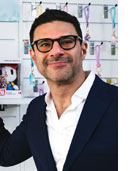 Felipe Noriega,
Felipe Noriega,
VP & Regional Director EMEA, YuMe Toys
The biggest opportunity remains the kidult space. The market has embraced it and conversations with buyers are much easier. There’s a lot less education to be done. The biggest challenge is the fact it’s such a saturated market. It’s very hard to cut through. There’s so much product, so many licenses, loads of content.. It’s tough to stand out.
 Matt Fantastic,
Matt Fantastic,
Creative Director, Forever Stoked Creative
The biggest opportunity I’m seeing is in non-traditional media tie-ins and collaborations. Traditional IP use has been a core part of the industry basically forever, and that’s not going away… But with the continued rise of platforms like TikTok – and the massive reach of non-traditional content creators – we’re going to see more projects that look to connect with audiences through partnerships with these creators. The old ways will still be there – but expect to see more official collaborations with YouTubers you’ve never heard of!
With games specifically, I also see a real hunger for new ideas and different takes on what a game can be. The massive influx of new adult gamers that occurred during and post quarantine are reaching a point in their fandom where they’ve worked their way through the classics and are looking for something different. We’ll see a lot more niche and higher concept hobby games hitting mass-market success.
The flip side of that hunger for novelty is that consumers are also hitting a point in their fandom where they’re starting to have full shelves, with unplayed games stacking up. This makes it harder than ever to get them to buy whatever new thing you’re putting out. At this point, the canon of modern classics is massive and offers a lifetime of amazing game experiences already… Getting attention and traction is harder than ever and will only get worse.
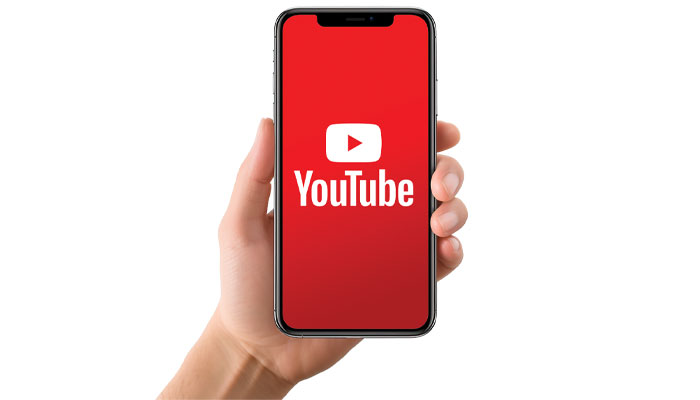
 Josh West,
Josh West,
Head of Product Design & Inventor Relations, Ravensburger North America
The biggest opportunities will be in products that deliver a fun, simple, accessible experience. Products that consumers see and instantly understand that they can bring home – without breaking the budget – open and get straight to having fun with family and friends.
It’s a wonderful thing to innovate, but innovation brings challenges… If you’ve created something new, it comes with a proportional amount of teaching… How does someone use this new concept, and why would someone want to? There’s always opportunity there, but I think that we’re going to see an increased desire from consumers for familiarity – a shift towards ‘comfort buying’. Companies and inventors that can bring products that a purchaser will recognise – meaning both to understand and to have some measure of previous experience with – and that are budget-friendly will be very successful in 2025.
I think the year ahead will bring some uncertainty. The biggest challenge will be to create these same familiar, fun products, keep them at a low price point – and make them stand out. Those three elements are each difficult by themselves, but success in the coming market will rely on all three. Producing abroad will have some new difficulties, and that will really test our ability to control price points. Our industry’s ability to be creative and come up with fun ideas and how to promote them will be tried as well.
The good news is that I really believe people are going to want to be together more – to periodically disconnect from distraction and connect with each other. Anything that we can do as playmakers to meet people where they are and facilitate those connections will be good for everyone.
 Dougal Grimes,
Dougal Grimes,
Founder, EightyTwo
In the evolving games market, there has been a notable shift toward card-based games and lower price-point offerings, alongside a significant increase in direct-to-consumer and e-commerce purchases. This shift has lowered the barriers to entry, fostering an exciting landscape for creativity and diversity among new creators and game concepts. However, this environment has also intensified competition for companies and inventors alike.
With easier access to information on current trends, licenses and themes, many innovators are exploring similar territories, leading to a crowded market space. In this landscape, social media and influencer marketing have become the dominant channels for driving consumer engagement. For companies and inventors to stand out, they must focus on creating unique, ‘ownable’ elements within their games – or innovating creatively with brand licenses.
A distinctive visual or interactive hook remains a powerful tool across all consumer products, particularly in the attention-driven world of social media. To capture interest and generate buzz, inventors and companies must integrate inventive, cost-effective features into their games – even for simple card games – that make an impact and have the potential to transform a game into an iconic, must-have experience.
I would be remiss not to mention the transformative impact of AI on both the development and marketing processes, which may require a more extensive article! A wide array of applications now specialise in generating copy, images and video content. This provides creators – who may not have previously had access to these skills – the tools to bring their ideas to life.
This shift has effectively ‘raised the floor’, creating a more inclusive landscape where accessibility and diversity of thought are amplified in the innovation process. The democratisation of these creative tools is paving the way for fresh voices and ideas, further enriching the development of new products and marketing strategies.
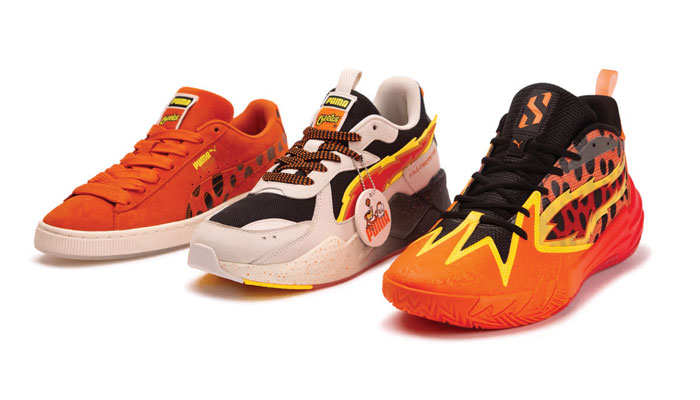
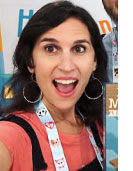 Sara Farber,
Sara Farber,
Co-Founder, Galactic Sneeze
A few weeks ago, I found myself staring at the seemingly never-ending wall of games at Target. Many appeared to have similar mechanics, themes or names, which made me wonder how someone popping in quickly to grab a game would know which to choose. From my perspective, the market seems to be more saturated than ever before. The good news is that games – and party games in particular – are clearly a well-performing category to warrant so much real estate in a big-box store. But the huge selection seemed overwhelming to me from a consumer standpoint – and daunting from an inventor standpoint. Given this sea of products, I think the biggest challenge in 2025 will be to create games that truly stand out on shelf or in amazon searches.
This challenge is potentially also a great opportunity for inventors. As a shopper, if your eyes land on a product that taps into a current trend, theme or IP you’re passionate about, you’re one step closer to stopping and taking a closer look. And as game designers, we’ll need to figure out what those new trends, themes or IPs are – and harness them in a fresh way.
One interesting approach may be to lean into unexpected collaborations. Who would have predicted that in 2024, Michael Cera x CeraVe, or Snoop Dogg x The Olympics would be such huge sensations?! Like PUMA x Cheetos, I think there’s an opportunity for surprising mash-ups in the game aisle. And along with this, comes the potential for reaching new or niche audiences that may currently be overlooked. See you on the shelves!
 Danny Kishon,
Danny Kishon,
MD, All in 1 Products
The biggest challenge for companies this year will be the economy. 2024 has been a very tough year at retail all around the world. If you extract LEGO’s growth from any of the published numbers in virtually any country, you’ll see significant double-digit declines. Add the fact that ‘close out’ is included in the numbers and it’s really not a very pretty picture.
Also, Temu, amazon marketplace and other unregulated Chinese online shops selling direct to the consumer at very low prices is a growing issue and likely to get worse in a difficult economy. Freight – both in terms of massively increased cost and delivery times – created problems in 2024 and will likely do so again this year. These affect both prices and managing inventory as forecasting needs to move so much further forward… And Trump’s tariffs are likely to affect US companies and those selling into the USA.
This also impacts inventors… When a market is not doing well, there is often less of an appetite for investment in innovation. Companies become more risk averse, making it harder to place products. Overcoming this might involve investing in taking the project further down the road in terms of development – which is an additional risk as well as a challenge, and a challenge to cashflow. In essence, the challenge for inventors is to figure out where and what to invest time and effort into, in a marketplace where placing product is harder and tougher.
When it comes to opportunities for companies, the good news is that in a difficult retail marketplace, there is a real chance to change your market share. Having a hit when things are generally slow can get you leapt on by retail and see your numbers soar. Other opportunities lie in growing sales via direct-to-consumer sales and marketing-led online retailers like the US version of TikTok Shop, where influencers earn a commission on sales they promote.
For inventors, think kidult. It’s where the market is expanding and so far, has been led by nostalgia rather than innovation. And look at the categories that had bad results in 2024… Those companies – rather than the ones already doing well – may be the ones looking for inspiration and innovation. Team up with an influencer and add a marketing angle to your innovation. Team up with a ‘Product Doctor’ and get focus and help with what to spend time and effort on – and how.
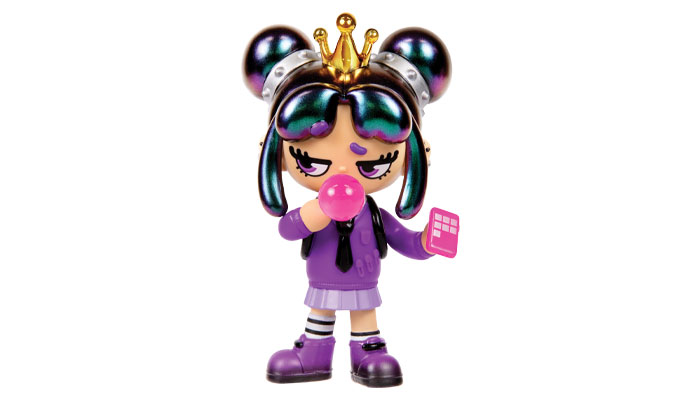
 Joost Poulus,
Joost Poulus,
Chief Product Officer, Moose Toys
Every year, the biggest opportunity for us is to continue to raise the bar of what’s possible in toys! At Moose, we have an insatiable appetite for innovation and uncovering untapped areas of play. This means that we’re looking to our internal R&D teams and external inventors to create something new and unexpected that will wow our customers, retailers and partners around the world.
The biggest challenge facing the industry in 2025 is most likely something that none of us are aware of yet. Over the past five years, apart from the standard challenges a toy company faces, there has been many unexpected obstacles we’ve had to face. Obviously Covid was something that challenged us all as the world seemingly changed overnight – however it finessed our ability to pivot quickly so we’re well prepared for what may be around the corner next. From a play point of view, our greatest opportunity – continuing to innovate – is also our biggest challenge, as we find new and exciting ways to captivate and delight the attention of our customers.
–
To stay in the loop with the latest news, interviews and features from the world of toy and game design, sign up to our weekly newsletter here






